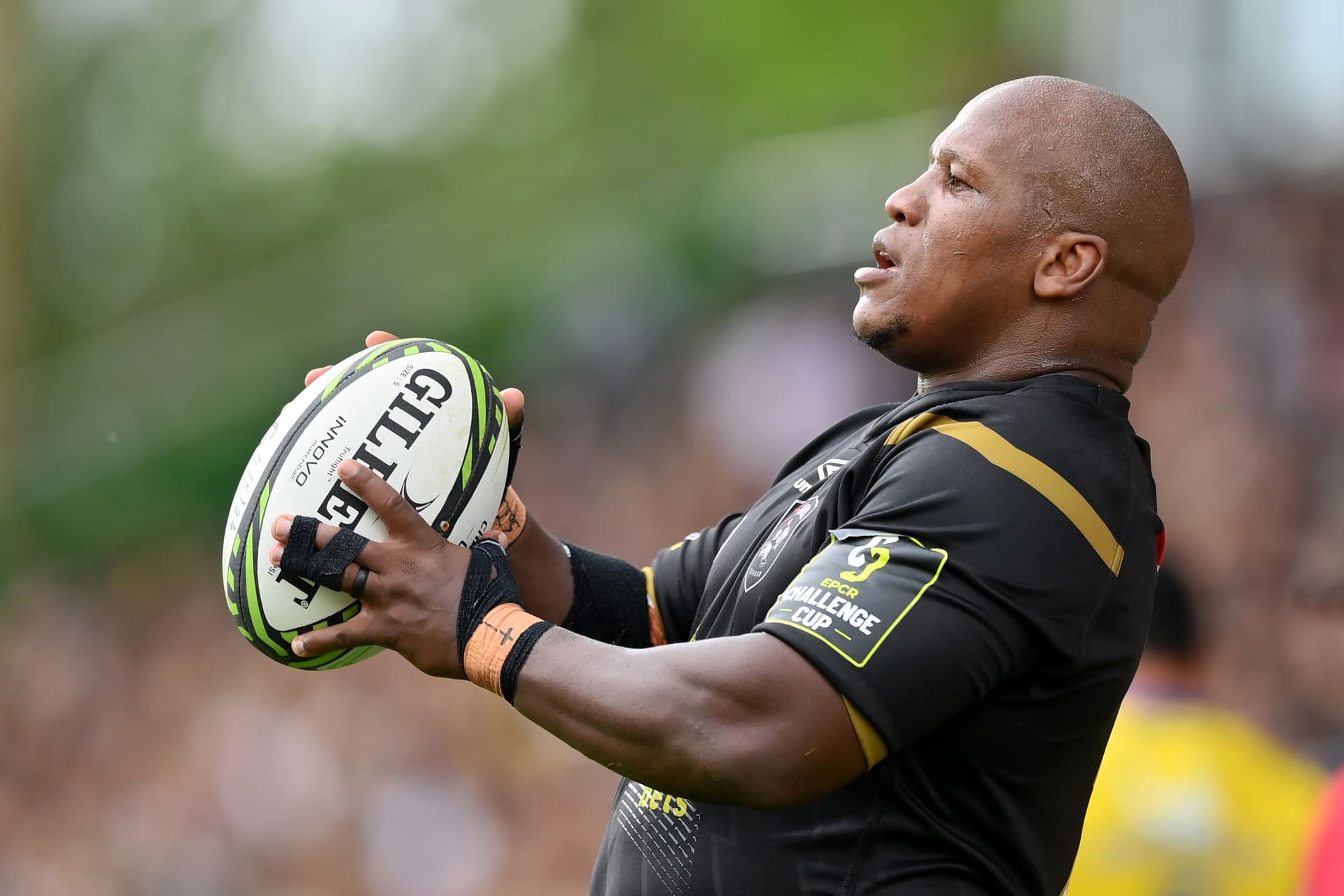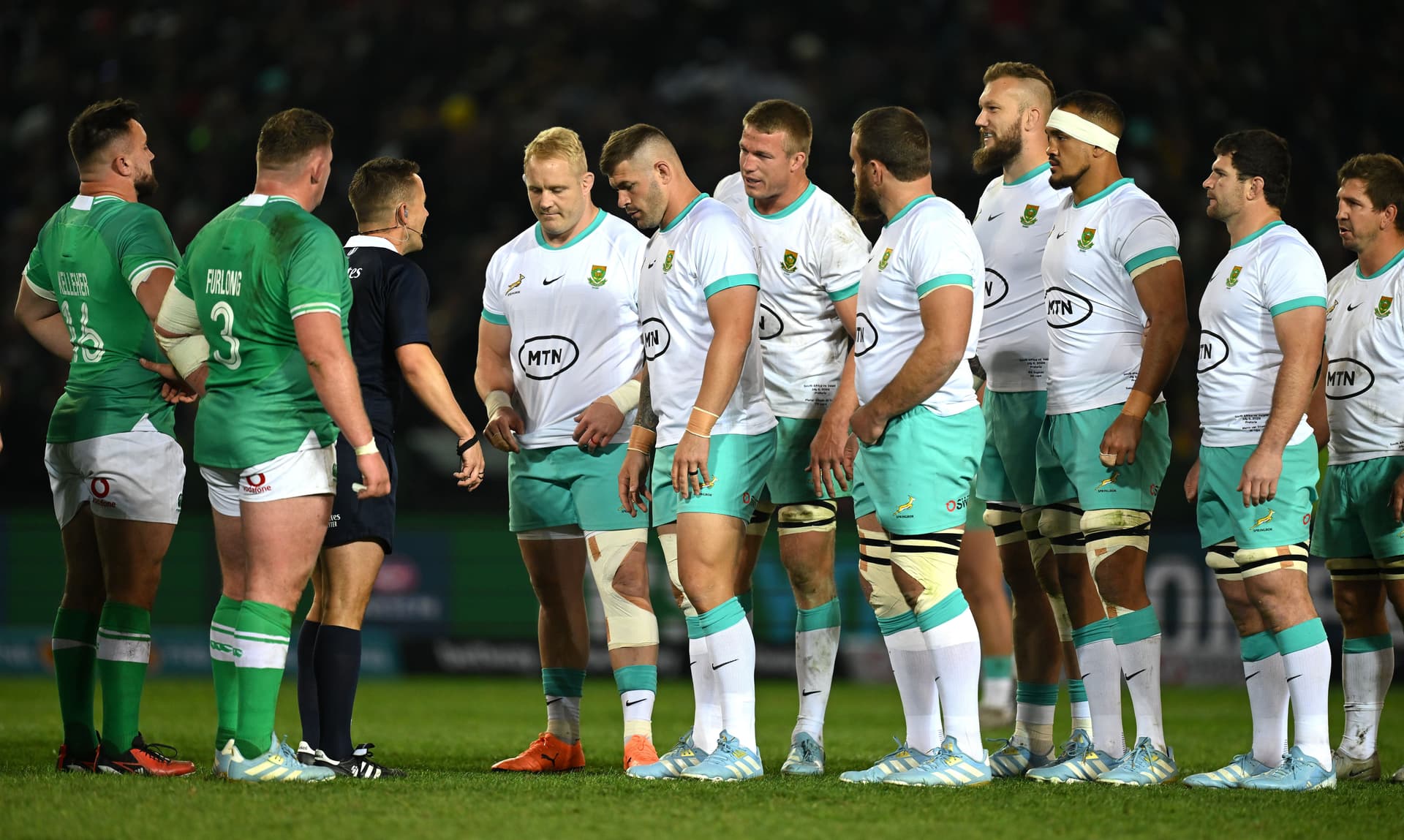Rugby
What Does a Hooker Do in Rugby? Role Explained
A hooker scrums in the middle of the front row. They also have a vital role in lineouts, as they are the ones who throw the ball in. Additionally, they hook the ball back at set pieces. Hookers need strength, ball-handling skill and game awareness.

Bongi Mbonambi//Getty Images
What Is A Hooker In Rugby Union?
In rugby union, the hooker is a crucial position within the forward pack. This player wears the number 2 jersey and plays in the front row of the scrum, positioned between the two props. The hooker’s role requires physical strength, technical skills, and a high level of game awareness. Unlike other forwards, the hooker has specialised tasks, especially in the scrum and lineout.
One of the main jobs of the hooker is to win possession for their team in set pieces. In the scrum, they “hook” the ball back to their teammates using their feet, which is where the term “hooker” originates. The hooker’s ability to connect with teammates and work as a unit with the props on either side is vital to the success of the scrum.
Hooker’s Role in the Lineout
The lineout is one of the most strategic elements of rugby union, and the hooker plays a key role in its success. When a ball goes out of bounds, the hooker is responsible for throwing it back in. This throw needs to be accurate and well-timed, as the opposition will attempt to steal the ball.
Before the throw, the hooker and their teammates decide on a lineout strategy. They might signal a specific code, which tells the jumpers where the ball will be thrown. The throw can be aimed at the front, middle, or back of the lineout, depending on the team’s tactics and the positioning of the opposing team’s players. The hooker must have strong communication with the lineout jumpers, as any miscommunication can lead to a turnover.
The throwing technique itself requires skill and consistency. A hooker must throw in a straight line to avoid penalties for not being accurate. Lineouts can be challenging under pressure, as hookers must ensure their throw is not only straight but also timed perfectly to match the jump of their teammate. A skilled hooker with a reliable throw-in can give a team a big advantage in maintaining possession during lineouts.
Hooker’s Role in the Scrum
The hooker’s role in the scrum is physically demanding. Positioned in the middle of the front row, the hooker works alongside the props to create a solid formation. The hooker is responsible for “hooking” or striking the ball with their foot to move it back through the scrum to the number 8, who can then release it to the backline.
A hooker’s technique in the scrum is critical. They need strong body positioning to withstand the pressure from the opposing team’s forwards. This involves leaning forward at the right angle, staying low, and maintaining a solid core to hold their position. If the hooker’s position is weak, the entire scrum could collapse, leading to a penalty.
Timing is crucial as well. When the referee calls “set,” the hooker needs to be ready to engage and use their footwork to strike the ball at the right moment. This requires both concentration and skill, as missing the strike or losing balance can result in the other team gaining possession. Hookers are often smaller than the props beside them, but they need incredible strength, agility, and resilience to handle the unique pressures of the scrum.

South Africa v Ireland - Summer Tour//Getty Images
| Positions | Row in the scrum |
| 2 props, 1 hooker | Front row |
| 2 locks | Second row |
| 2 flankers, one number 8 | Back row |
Many hookers are also comfortable at prop, with one notable example being 2007 Rugby World Cup-winning Springbok captain John Smit.
What Are the Different Forward Positions in Rugby Union?
Forwards in rugby union are divided into several key positions, each with specific roles. The forward pack consists of eight players, split into the front row, second row, and back row.
Front Row
This row includes two props and the hooker. The props (numbers 1 and 3) are responsible for supporting the hooker in the scrum and creating stability. Their strength is essential in the scrum’s initial engagement, and they often play key roles in rucks and mauls. The hooker, as discussed, is the middle player in the front row, handling ball recovery in the scrum and lineout throw-ins.
Second Row
The second row consists of two locks (numbers 4 and 5). Locks are often the tallest players on the team and are key in lineouts due to their height and jumping ability. Their job in the scrum is to push from behind the front row, providing additional power. Locks are also essential in open play, frequently involved in rucks, mauls, and carrying the ball forward.
Back Row
The back row includes two flankers (numbers 6 and 7) and a number 8. Flankers play on either side of the scrum, and their role is to tackle, contest for possession, and support the team’s defence. The number 8 packs down at the back of the scrum and plays a key role in linking the forwards and backs. Number 8s often carry the ball from the back of the scrum, creating attacking opportunities.
Each forward position has unique responsibilities, but all forwards must work together. They are primarily responsible for winning possession, whether through scrums, lineouts, or open play. Forwards need strength and endurance, as they are involved in the most physically intense aspects of the game.
The structure of the forward pack provides the foundation for a rugby union team’s success. Each position has its strengths, but together, they form a powerful unit that can dominate in scrums, lineouts, and physical contests on the field.
Leonard Solms is a freelance journalist who has been covering local and international sport from South Africa since 2015. Best known for his work for ESPN, he has also written for Al Jazeera, The Continent, New Frame, Planet Rugby and GiveMeSport among several other publications.